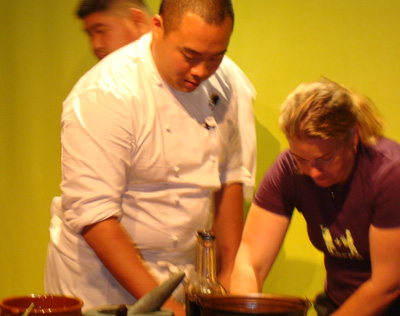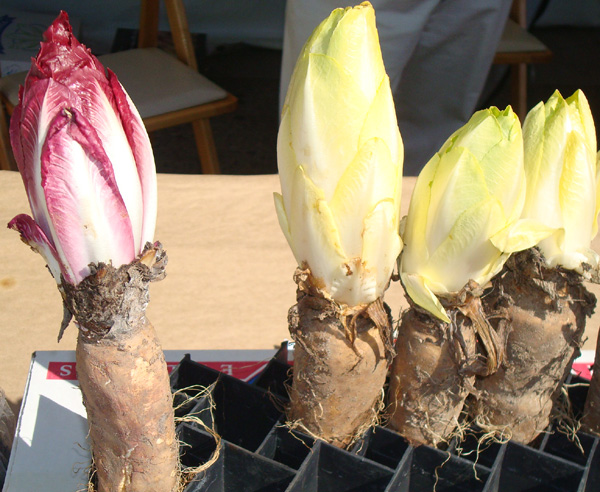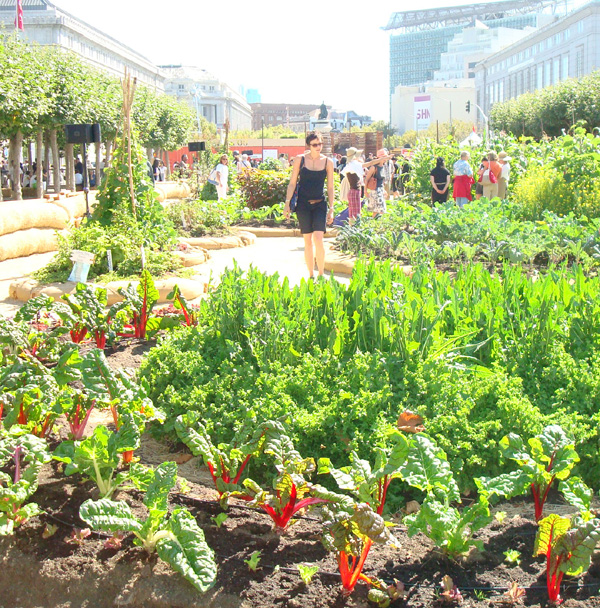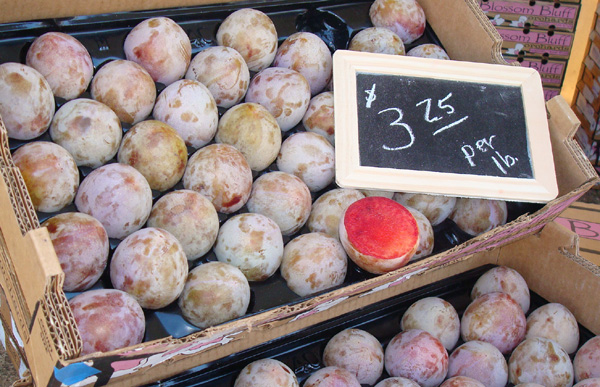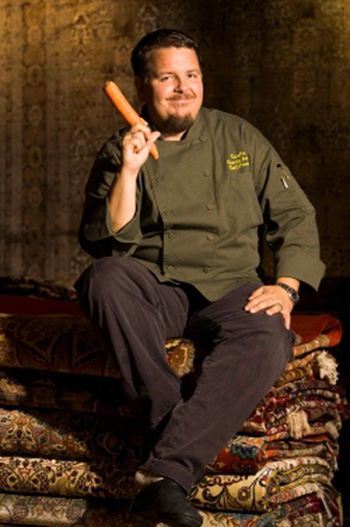Slow Food Nation’s Cooking Demos Coming to YouTube
If you missed this weekend’s Slow Food Nation event in San Francisco, you’ll still be able to enjoy a part of it on the Web in the near future.
Cooking demos in the “Green Kitchen” were filmed and will be posted on YouTube at a future date. I got a chance to sit in on two of the demos, the first featured Alice Waters of Berkeley’s Chez Panisse making vinaigrette with her 25-year-old daughter, Fanny Singer, who was on break from grad school. The second featured maverick New York chef David Chang, who created his take on caprese salad, in which he substituted tofu for mozzarella, and shiso for basil.
Alice Waters has long been associated with salad, having almost single-handedly popularized mesclun mix in the United States. Fanny said her mother’s salad was probably the first food she ate in puree form when she was a baby.
“Salad is my favorite thing to cook,” Fanny said. “When I say that, my friends all say that there’s not much cooking to that. But there is a lot involved in making a good salad.” It starts with carefully washed leaves that have been dried completely so that the dressing will adhere to it better and the greens will be crisper. Then, there’s the vinaigrette, which Waters says, should not shock you with its tartness, but give you a pleasant brightness.
Such care is taken with her salads that Waters said it used to take one person eight hours to wash and dry all the salad leaves when Chez Panisse first opened.
Decades ago, when Playboy magazine named Chez Panisse the seventh best restaurant in the country, Waters flew to New York for the big gala event. She decided to make salad as her dish. She picked all the lettuces from the garden at the last possible moment, carrying them on the plane still covered in dirt (imagine getting that through security today).

